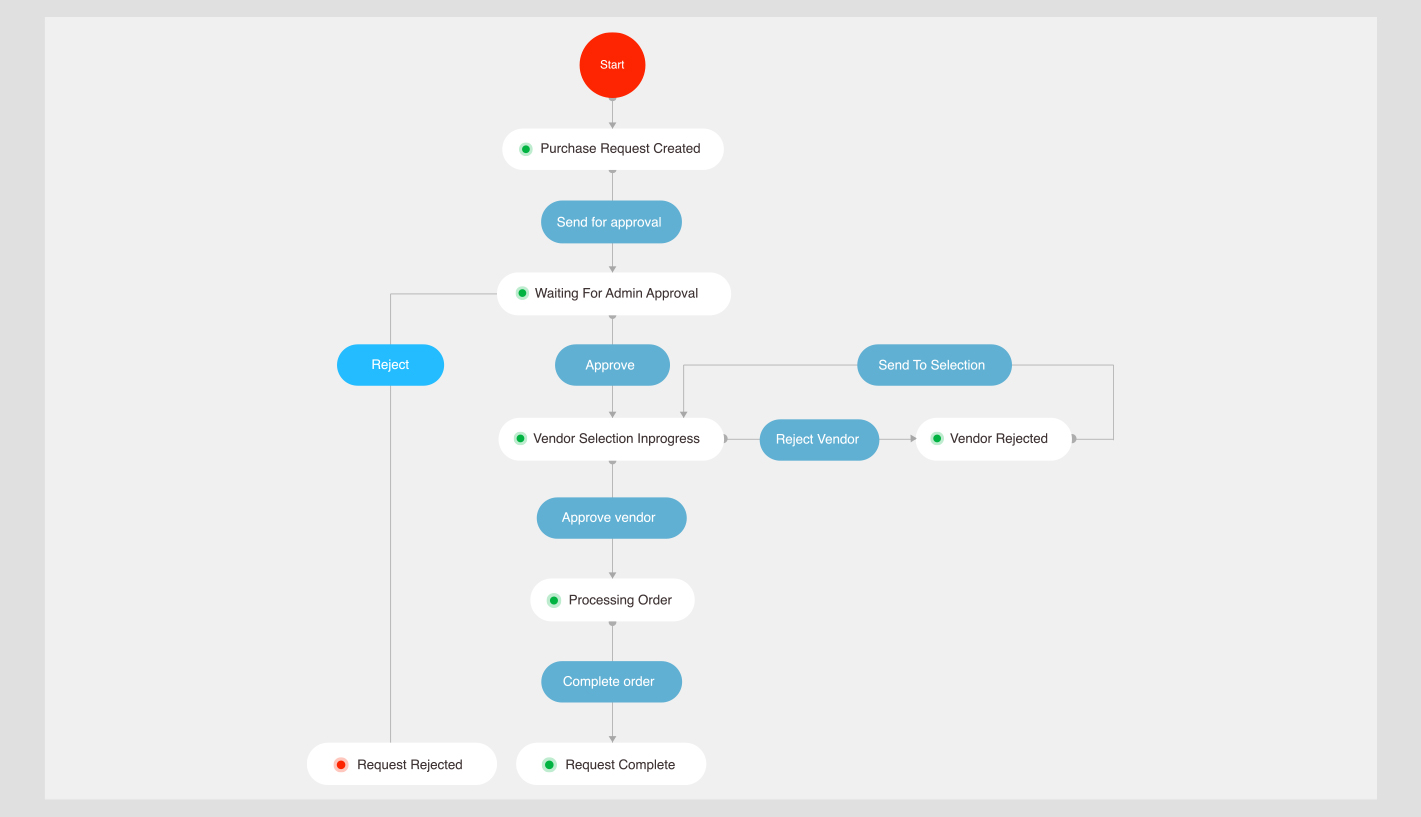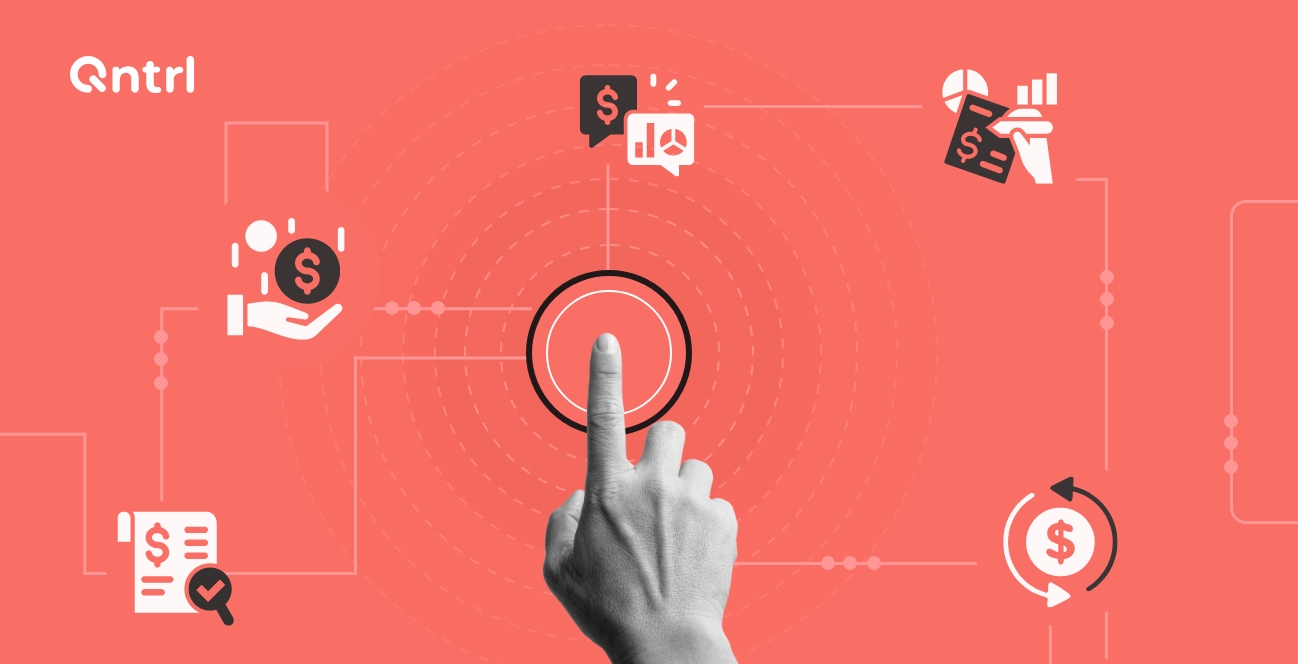Whether you’re starting up a small business or you’re the head of a finance department at an established company, automating your purchase requisition just makes sense. Faster processing times, cost savings, and stronger control mean smart teams are on the lookout for top-of-the-line automated purchase requisition solutions.
Purchase order automation means using centralized software to generate a purchase order process that instantly sends a purchase requisition to a designated staff member, for approval or denial. If approved, the purchase order document is then automatically sent to the vendor.
What does the typical purchase requisition process look like?
No two purchase requests look alike, but all follow a flow of events triggered when a department needs to make a purchase. From the creation of the request to the delivery of the products or services, multiple tasks are required to be completed before the purchasing team can fulfill the request.
Having an established system for purchase requisitions makes it simple for businesses to generate their purchase requests from anywhere they happen to be. Whether they’re operating a personal computer, a smartphone, or a tablet, the best solutions allow workers to seamlessly get their request placed.
Steps involved in the purchase process
A purchase requisition process follows a sequence of predictable tasks similar to the list below:
Request creation
The department or individual with the request fills out a requisition form.
Internal approvals
A supervisor or department head approves the requisition and routes it to the purchasing department.
Purchasing department review
The purchasing team then approves or denies the request after review. If a rejected approval is denied due to lack of information, it is then sent back to the requesting team for modification.
Purchase order creation
Once the purchase requisition is approved, a purchase order is created detailing quantities, types, and prices.
Provider acceptance
The purchase order is sent to the provider. Once accepted, the purchase order undergoes a contract.
Of course, this is just a general example of a typical purchase process. In most cases, bottlenecks result in inefficiencies and losses.
Why does a manual purchase requisition process slow things down and cost more?
Too many humans mean things stall out
It’s not uncommon for organizations to struggle with placing orders and managing purchases on schedule. In a manual purchase requisition cycle, a single task, such as validating a request, is repeated by a single individual each time a new request is raised. Depending on the approver’s availability, this step could hum along flawlessly or be held up until the approver returns.
Purchase requests tend to get stuck in the approval process due to the hierarchical approval structure. Frenzied workflows, silos, and miscommunication between departments mean even the simplest of approvals can be held up for days.
Don’t forget the implications of those winding email threads, chats, resubmissions, and rejections, either. These bottlenecks delay projects, create critical slowdowns, and eventually have the power to stunt business growth.
Labor and manual work are expensive
A manual purchase requisition process is pricier than automating things, as you need more employees to manage all the different stages in the cycle manually. Plus, when you depend on paperwork to keep things organized, costs for paper, ink, printers, and even filing space can add up.
Errors bring progress to a grinding halt
A manual cycle means employees are either going around the office or their chat channels getting approval from one or more approvers. Since there’s no dedicated method to track and handle errors, people are forced to comb through email exchanges and chats to rectify mistakes.
Limited visibility creates hiccups
Spreadsheets just don’t scale well. Whether your purchase request documentation is stored in hard copies, PDFs, or some sort of drive, you can’t instantly access details when needed. In the time it takes you to rummage through paper and web trails, you could have already resolved the issue with an automated system. It’s much easier to generate reports and gather data when your process is visible and automated.
Compliance offenses aren’t cheap
While strict policies and guidelines might be in place, inconsistent practices and duplicate requests put companies at risk for expense fraud and needless overspending.
Automation streamlines your purchase requisition process
The simplest, most effective way to manage the purchase requisition process is to take advantage of an automation solution tailored to your organization’s needs.

Benefits include:
Faster approvals
Paperwork elimination
Infrequent errors
Rare discrepancies
Perfect compliance
Cost savings
Briefer procurement cycle
Enhanced employee productivity
Increased operational transparency
Improved visibility into spending across departments
Accessibility

Purchase request automation ensures that the requester provides necessary information and routes the purchase orders to the appropriate person or department, without waiting for human intervention. Whether you’re an initiator or an approver, you can effortlessly look up orders at any moment. Finance leaders can also track, monitor, and analyze business costs from a single platform.








